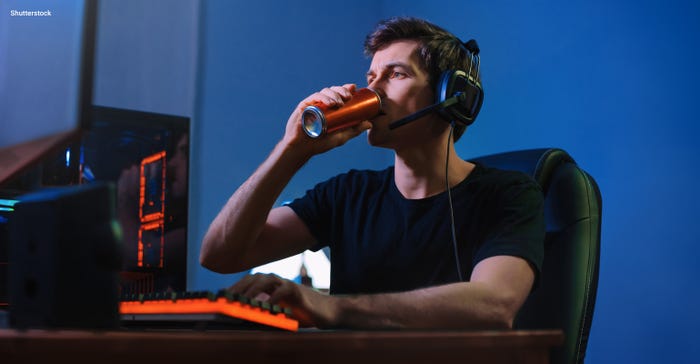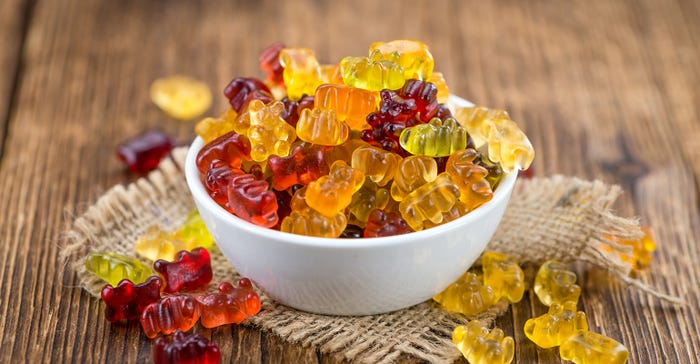Better Bones & Joints References
October 10, 2005
Oct. 10 2005 Natural Products INSIDER
"Bone and Joint" References
1. Englund U et al. A 1-year combined weight-bearing training program isbeneficial for bone mineral density and neuromuscular function in older women.Osteoporos Int. 16, 9:1117-23, 2005. http://www.springeronline.com/sgw/cda/frontpage/0,11855,5-10054-70-1102329-0,00.html
2. Swenson KK et al. Interventions to prevent loss of bone mineral densityin women receiving chemotherapy for breast cancer. Clin J Oncol Nurs.9, 2:177-84, 2005.
3. Shea B et al. "Calcium supplementation on bone loss in postmenopausalwomen." Cochrane Database Syst Rev. 1:CD004526, 2004. www.medlib.com/spi/cdsr.htm
4. Chee WS et al. "The effect of milk supplementation on bone mineraldensity in postmenopausal Chinese women in Malaysia." Osteoporos Int.14, 10:828-34, 2003. www.link.springer.de/link/service/journals/00198
5. Teegarden D et al. Dietary calcium intake protects women consuming oralcontraceptives from spine and hip bone loss. J Clin Endocrinol Metab. 90,9:5127-33, 2005. http://jcem.endojournals.org
6. Dobson A et al. Improving Public Health, Reducing Health Care Costs: AnEvidence-Based Study of Five Dietary Supplements: Fact Sheet. The LewinGroup, September 2004. www.lewin.com
7. Newmark HL et al. Should calcium and vitamin D be added to the currentenrichment program for cereal-grain products? Amer J Clin Nutr. 80,2:264-70, 2004. www.ajcn.org
8. Grant AM et al. Oral vitamin D3 and calcium for secondary prevention oflow-trauma fractures in elderly people (Randomised Evaluation of Calcium Orvitamin D, RECORD): a randomised placebo-controlled trial. Lancet.365, 9471:1621-8, 2005. www.thelancet.com
9. Malabanan AO, Holick MF. "Vitamin D and bone health in postmenopausalwomen." J Womens Health (Larchmt). 12, 2:151-6, 2003.
10. Pasco JA et al. "Seasonal periodicity of serum vitamin D andparathyroid hormone, bone resorption and fractures: the Geelong OsteoporosisStudy." J Bone Miner Res. 19, 5:752-8, 2004. www.jbmr-online.org
11. Nuti R et al. "Vitamin D status and bone turnover in women withacute hip fracture." Clin Orthop. 422:208-13, 2004. www.corronline.com
12. Matsumoto T et al. A new active vitamin D, ED-71, increases bone massin osteoporotic patients under vitamin D supplementation: a randomized,double-blind, placebo-controlled clinical trial. J Clin Endocrinol Metab.90, 9:5031-6, 2005. http://jcem.endojournals.org
13. Heaney RP. "Phosphorus nutrition and the treatment ofosteoporosis." Mayo Clin Proc. 79, 1:91-7, 2004. www.mayo.edu/proceedings
14. Kawauru A et al. Phosphorus intake and bone mineral density (BMD) ClinCalcium. 15, 9:1501-6, 2005.
15. Rude RK et al. "Magnesium deficiency: effect on bone and mineralmetabolism in the mouse." Calcif Tissue Int. 72, 1:32-41, 2003.
16. Stendig-Lindberg G et al. "Experimentally induced prolongedmagnesium deficiency causes osteoporosis in the rat." Eur J Intern Med.15, 2:97-107, 2004.
17. Rude RK and Gruber HE. Magnesium deficiency and osteoporosis: animaland human observations. J Nutr Biochem. 15, 12:710-6, 2004. http://www.sciencedirect.com/science/journal/09552863
18. Going SB et al. Dietary iron positively influences bone mineraldensity in postmenopausal women on hormone replacement therapy. J Nutr.135, 4:863-9, 2005. www.nutrition.org
19. Maggio D et al. "Marked decrease in plasma antioxidants in agedosteoporotic women: results of a cross-sectional study." J ClinEndocrinol Metab. 88, 4:1523-7, 2003. http://jcem.endojournals.org
20. Turan B, Can B, Delilbasi E. "Selenium combined with vitamin E andvitamin C restores structural alterations of bones in heparin-inducedosteoporosis." Clin Rheumatol. 22, 6:432-6, 2003. http://link.springer.de/link/service/journals/10067
21. Wolf RL et al. Lack of a relation between vitamin and mineralantioxidants and bone mineral density: results from the Women's HealthInitiative. Am J Clin Nutr. 82, 3:581-8, 2005. www.ajcn.org
22. Kneissel M et al. Retinoid-induced bone thinning is caused bysubperiosteal osteoclast activity in adult rodents. Bone. 36,2:202-14, 2005. http://www.sciencedirect.com/science/journal/87563282
23. Sato Y et al. Effect of folate and mecobalamin on hip fractures inpatients with stroke: a randomized controlled trial. JAMA. 293,9:1082-8, 2005. http://jama-assn.org
24. Ryan-Harshman M, Aldoori W. "Bone health. New role for vitaminK?" Can Fam Physician. 50:993-7, 2004. www.cfpc.ca/communications/cfp/cfpindex.asp
25. Sun L et al. "Inhibition of osteoporosis induced by proteindeficient food intake by active vitamin D(3) and vitamin K(2) in rats." BiosciBiotechnol Biochem. 68, 6:1385-7, 2004. www.jsbba.or.jp/bbindexj.html
26. Devine A et al. Protein consumption is an important predictor of lowerlimb bone mass in elderly women.Am J Clin Nutr. 81, 6:1423-28, 2005. www.ajcn.org
27. Messina M, Messina V. "Soyfoods, soybean isoflavones and bonehealth: a brief overview." J Ren Nutr. 10, 2:63-8, 2000. www.jrnjournal.org
28. Shu, XO et al. Prospective cohort study of soy food consumption andrisk of bone fracture among postmenopausal women. Arch Intern Med.165, 16:1890-5, 2005. http://archinte.ama-assn.org
29. Arjmandi BH and Smith BJ. Soy isoflavones' osteoprotective role inpostmenopausal women: mechanism of action. J Nutr Biochem. 13,3:130-137, 2002. http://www.sciencedirect.com/science/journal/09552863
30. Chen YM et al. Soy isoflavones have a favorable effect on bone loss inChinese postmenopausal women with lower bone mass: a double-blind, randomized,controlled trial. J Clin Endocrinol Metab. 88, 10:4740-7, 2003. http://jcem.endojournals.org
31. Watkins BA et al. Omega-3 polyunsaturated fatty acids and skeletalhealth. Exp Biol Med. 226, 6:485-97, 2001. www.ebmonline.org
32. Weiss LA et al. Ratio of n-6 to n-3 fatty acids and bone mineraldensity in older adults: the Rancho Bernardo Study.Am J Clin Nutr. 81,4:934-8, 2005. www.ajcn.org
33. Sun D et al. Dietary n-3 fatty acids decrease osteoclastogenesis andloss of bone mass in ovariectomized mice. J Bone Miner Res. 18,7:1206-16, 2003. www.jbmr-online.org
34. Yao Ch et al. Fabrication and evaluation of a new composite composedof tricalcium phosphate, gelatin, and Chinese medicine as a bone substitute. JBiomed Mater Res B Appl Biomater. Epub ahead of print, Jul 15, 2005. http://www3.interscience.wiley.com/cgi-bin/jhome/96516924
35. Abrams SA et al. A combination of prebiotic short- and long-chaininulin-type fructans enhances calcium absorption and bone mineralization inyoung adolescents. Am J Clin Nutr. 82, 2:471-6, 2005. www.ajcn.org
36. Das AS, Mukherjee M, Mitra C. "Evidence for a prospectiveanti-osteoporosis effect of black tea (Camellia Senensis) extract in abilaterally ovariectomized rat model." Asia Pac J Clin Nutr. 13,2:210-6, 2004.
37. Mukherjee M et al. "Prevention of bone loss by oil extract of garlic(Allium sativum Linn.) in an ovariectomized rat model of osteoporosis." PhytotherRes. 18, 5:389-94, 2004. www.interscience.wiley.com/jpages/0951-418X
38. Kamenicek V, Holan P, Franek P. "[Systemic enzyme therapy in thetreatment and prevention of post-traumatic and postoperative swelling.]" ActaChir Orthop Traumatol Cech. 68, 1:45-9, 2001.
39. Jacques P et al. Do antioxidant micronutrients protect against thedevelopment and progression of knee osteoarthritis? Arthritis Rheum.39, 4:648-56, 1996.
40. Clark AG et al. The effects of ascorbic acid on cartilage metabolismin guinea pig articular cartilage explants. Matrix Biol. 21, 2:175-84,2002.
41. Kurz B et al. Dietary vitamins and selenium diminish the developmentof mechanically induced osteoarthritis and increase the expression ofantioxidative enzymes in the knee joint of STR/1N mice. Osteoarth Cartil.10, 2:119-26, 2002.
42. McAlindon TE et al. Relation of dietary intake and serum levels ofvitamin D to progression of osteoarthritis of the knee among participants in theFramingham Study. Ann Intern Med. 125, 5:353-9, 1996. www.annals.org
43. lane NE et al. Serum vitamin D levels and incident changes ofradiographic hip osteoarthritis: a longitudinal study. Study of OsteoporoticFractures Research Group. Arthritis Rheum. 42, 5:854-60, 1999.
44. Glowacki J et al. Osteoporosis and vitamin-D deficiency amongpostmenopausal women with osteoarthritis undergoing total hip arthroplasty. JBone Joint Surg Am. 85, 12:2371-7, 2003. www.ejbjs.org
45. Reginster JY et al. Long-term effects of glucosamine sulphate onosteoarthritis progression: a randomised, placebo-controlled clinical trial. Lancet.357, 9252:251-6, 2001. www.thelancet.com
46. Halbekath J et al. Glucosamine sulphate and osteoarthritis. Lancet.357, 9268:1617, 2001. www.thelancet.com
47. Bruyere O et al. Glucosamine sulfate reduces osteoarthritisprogression in postmenopausal women with knee osteoarthritis: evidence from two3-year studies. Menopause. 11, 2:138-43, 2004. www.menopausejournal.com
48. Pavelka K et al. Glucosamine sulfate use and delay of progression ofknee osteoarthritis: a 3-year, randomized, placebo-controlled, double-blindstudy. Arch Intern Med. 162, 18:2113-23, 2002. http://archinte.ama-assn.org/
49. Thie NM et al. Evaluation of glucosamine sulfate compared to ibuprofenfor the treatment of temporomandibular joint osteoarthritis: a randomized doubleblind controlled 3 month clinical trial. J Rheumatol. 28, 6:1347-55,2001. www.jrheum.com
50. Mazieres B et al. Chondroitin sulfate in osteoarthritis of the knee: aprospective, double blind, placebo controlled multicenter clinical study. JRheumatol. 28, 1:173-81, 2001. www.jrheum.com
51. Uebelhart D et al. Intermittent treatment of knee osteoarthritis withoral chondroitin sulfate: a one-year, randomized, double-blind, multicenterstudy versus placebo. Osteoarth Cartil. 12, 4:269-76, 2004.
52. Debi R et al. [GAG for osteoarthritis of the knee--a prospectivestudy.] Harefuah. 138, 6:451-3, 518, 2000.
53. Rossi A et al. In vitro proteoglycan sulfation derived from sulfhydrylcompounds in sulfate transporter chondrodysplasias. Pediatr Pathol MolMed. 22, 4:311-21, 2003.
54. Berg P and Olsson U. Intra-articular injection of non-animalstabilised hyaluronic acid (NASHA) for osteoarthritis of the hip: a pilot study.Clin Exp Rheumatol. 22, 3:300-6, 2004.
55. Karatay S et al. Effects of different hyaluronic acid products onsynovial fluid levels of intercellular adhesion molecule-1 and vascular celladhesion molecule-1 in knee osteoarthritis. Ann Clin Lab Sci. 34,3:330-5, 2004.
56. Oesser S and Seifert J. Stimulation of type II collagen biosynthesisand secretion in bovine chondrocytes cultured with degraded collagen. CellTissue Res. 311, 3:393-9, 2003. ww.springeronline.com
57. Moskowitz RW. Role of collagen hydrolysate in bone and joint disease.Semin Arthritis Rheum. 30, 2:87-99, 2000. http://journals.elsevierhealth.com
58. Kalman DS et al. A randomised double-blind clinical pilot trialevaluating the safety and efficacy of hydrolysed collagen type II in adults withosteoarthritis. FASEB. LB435:A90, 2004. www.fasebj.org
59. DeParle L et al. Efficacy and safety of glycosated undenatured type IIcollagen (UC-II) in arthritic dogs. J Amer Coll Nutr. 45th AnnualMeeting, 2004.
60. Gupta R et al. Therapeutic efficacy and safety of glycosatedundenatured type II collagen derivative (UC-II) in arthritic dogs. Presentedat Society of Toxicology Annual Meeting, 2005.
61. Moreau M et al. Clinical evaluation of a powder of quality elk velvetantler for the treatment of osteoarthrosis in dogs. Can Vet J. 45,2:133-9, 2004.
62. Kimmatkar N et al. Efficacy and tolerability of Boswellia serrataextract in treatment of osteoarthritis of knee--a randomized double blindplacebo controlled trial. Phytomed. 10, 1:3-7, 2003. www.elsevier-deutschland.de/phytomed
63. Singh BB et al. The effectiveness of Commiphora mukul forosteoarthritis of the knee: an outcomes study. Altern Ther Health Med.9, 3:74-9, 2003.
64. Gagnier JJ et al. Harpgophytum procumbens for osteoarthritis and lowback pain: a systematic review. BMC Complement Altern Med. 4, 1:13,2004. www.biomedcentral.com
65. Andersen ML et al. Evaluation of acute and chronic treatments withHarpagophytum procumbens on Freund's adjuvant-induced arthritis in rats. JEthnopharmacol. 91, 2-3:325-30, 2004. http://www.sciencedirect.com/science/journal/03788741
66. Schmid B et al. Efficacy and tolerability of a standardized willowbark extract in patients with osteoarthritis: randomized placebo-controlled,double blind clinical trial. Phytother Res. 15, 4:344-50, 2001. http://www3.interscience.wiley.com/cgi-bin/jhome/12567
67. Innes JF et al. Randomised, double-blind, placebo-controlled, parallelgroup study of P54FP for the treatment of dogs with osteoarthritis. VetRec. 152, 15:457-60, 2003.
68. Liacini A et al. Triptolide suppresses proinflammatorycytokine-induced matrix metalloproteinase and aggrecanase-1 gene expression inchondrocytes. Biochem Biophys Res Commun. 327, 1:320-7, 2005. http://www.sciencedirect.com/science/journal/0006291X
69. Walker AF et al. Bromelain reduces mild acute knee pain and improveswell-being in a dose-dependent fashion in an open study of otherwise healthyadults. Phytomed. 9, 8:681-6, 2002. www.elsevier-deutschland.de/phytomed
70. Akhtar NM et al. Oral enzyme combination versus diclofenac in thetreatment of osteoarthritis of the knee--a double-blind prospective randomizedstudy. Clin Rheumatol. 23, 5:410-5, 2004. www.springerlink.com
71. Hesslink R et al. Cetylated fatty acids improve knee function inpatients with osteoarthritis. J Rheumatol. 29, 8:1708-12, 2002. www.jrheum.com
72. Kraemer WJ et al. Effect of a cetylated fatty acid topical cream onfunctional mobility and quality of life of patients with osteoarthritis. JRheumatol. 31, 4:767-74, 2004. www.jrheum.com
73. Ratamass NA et al. Effects of treatment with a cetylated fatty acidtopical cream on static postural stability and plantar pressure distribution inpatients with knee osteoarthritis. J Strength Cond Res. 19, 1:115-21,2005. http://nsca.allenpress.com
74a. Colker CM et al. ffects of a milk-based bioactive micronutrientbeverage on pain symptoms and activity of adults with osteoarthritis: adouble-blind, placebo-controlled clinical evaluation. Nutrition. 18,5:388-92, 2002. http://www.journals.elsevierhealth.com/periodicals/nut/home
74b. Zenk JL et al. The effects of milk protein concentrate on thesymptoms of osteoarthritis in adults: an exploratory, randomized, double-blind,placebo-controlled trial. Curr Thera Res. 63, 7:43042, 2002. http://www.sciencedirect.com/science/journal/0011393X
75. Hagfors L et al. "Antioxidant intake, plasma antioxidants andoxidative stress in a randomized, controlled, parallel, Mediterranean dietaryintervention study on patients with rheumatoid arthritis." Nutr J.2, 1:5, 2003. www.nutritionj.com
76. Cerhan JR et al. Antioxidant micronutrients and risk of rheumatoidarthritis in a cohort of older women. Am J Epidemiol. 157, 4:345-54,2003. www.aje.oupjournals.org
77. Kiziltunic A et al. Carnitine and antioxidants levels in patients withrheumatoid arthritis. Scand J Rheumatol. 27, 6:441-5, 1998.
78. Lee SJ et al. Astaxanthin inhibits nitric oxide production andinflammatory gene expression by suppressing I(kappa)B kinase-dependent NF-kappaBactivation. Mol Cells. 16, 1:97-105, 2003. www.molcells.org
79. Spiller GA and Nir Y. BioAstin helps relieve pain and improvesperformance in patients with rheumatoid arthritis. Healh Research and StudiesCenter, Los Altos, Calif., 2002.
80. Furse RK et al. Oral administration of gamma linolenic acid, anunsaturated fatty acid with anti-inflammatory properties, modulatesinterleukin-1beta production by human monocytes. J Clin Immunol. 22,2:83-91, 2002. www.kluweronline.com/issn/0271-9142/current
81. Brzeski M et al. Evening primrose oil in patients with rheumatoidarthritis and side-effects of non-steroidal anti-inflammatory drugs. Br JRheumatol. 30, 5:370-2, 1991.
82. Laposata m et al. Alteration of the cellular fatty acid profile andthe production of eicosanoids in human monocytes by gamma-linolenic acid. ArthritisRheumatism. 33, 10:1526-33, 1990. www3.interscience.wiley.com/cgi-bin/currentissue?ID=76509746
83. Watson J et al. Cytokine and prostaglandin production by monocytes ofvolunteers and rheumatoid arthritis patients treated with dietary supplements ofblackcurrant seed oil. Br J Rheumatol. 32, 12:1055-8, 1993.
684. Boyce EG et al. Treatment of rheumatoid arthritis with blackcurrantseed oil. Br J Rheumatol. 33, 9:847-52, 1994.
85. Nordstrom DC et al. Alpha-linolenic acid in the treatment ofrheumatoid arthritis. A double-blind, placebo-controlled and randomized study:flaxseed vs. safflower seed. Rheumatol Int. 14, 6:231-4, 1995.
86. James MJ et al. Dietary n-3 fats as adjunctive therapy in a prototypicinflammatory disease issues and obstacles for use in rheumatoid arthritis. ProstaglandLeukotr Essent Fatty Acids. 68, 6:399-405, 2003. www.harcourt-international.com/journals/plef
87. Cleland LG et al. The role of fish oils in the treatment of rheumatoidarthritis. Drugs. 63, 9:845-53, 2003.
88. Kless T et el. Anti-inflammatory effects of a low arachidonic aciddiet and fish oil in patients with rheumatoid arthritis. Rheumatol Int.23, 1:27-36, 2003.
89. Oh R. J. Practical Applications of Fish Oil (n-3 Fatty Acids) inPrimary Care. Amer Board Fam Pract. 18, 1:28-36, 2005. http://www.jabfp.org
90. Gruenwald J et al. Efficacy and tolerability of a combination ofLyprinol and high concentrations of EPA and DHA in inflammatory rheumatoiddisorders. Adv Ther. 21, 3:197-201, 2004.
91. Halpern GM. Anti-inflammatory effects of a stabilized lipid extract ofPerna canaliculus, Lyprinol. Allerg Immunol. 32, 7:272-8, 2000.
92. Bagchi D et al. Effects of orally administered undenatured type IIcollagen against arthritic inflammatory diseases:a mechanistic exploration. IntJ Clin Pharmacol Res. 22:101-10, 2002.
93. Trentham DE et al. Effects of oral administration of type II collagenon rheumatoid arthritis. Science. 261, 5129:1727-30, 1993. www.sciencemag.org
94. Ausar SF et al. Treatment of rheumatoid arthritis by oraladministration of bovine tracheal type II collagen. Rheumatol Int. 20,4:138-44, 2001.
95. Abdullaeva GK and Shakimova BS. [An evaluation of the efficacy oftreating rheumatoid arthritis with preparations for local use] Revmatologiia(Mosk). 4:35-9, 1985.
96. Anikina NV et al. [The effect of dimethyl sulfoxide on thethromboelastographic indices and the microcirculation in patients with rheumaticdiseases] Ter Arkh. 61, 12:106-9, 1989.
97. Kontny E et al. Impaired generation of taurine chloramine by synovialfluid neutrophils of rheumatoid arthritis patients. Amino Acids. 23,4:415-8, 2002.
98. Wilkinson LJ and Waring RH. Cysteine dioxygenase: modulation ofexpression in human cell lines by cytokines and control of sulphate production.Toxicol In Vitro. 16, 4:481-3.
99. Zafarullah M et al. Molecular mechanisms of N-acetylcysteine actions.Cell Mol Life Sci. 60, 1:6-20, 2003
100. Muller G et al. COMP (cartilage oligomeric matrix protein) issynthesized in ligament, tendon, meniscus, and articular cartilage. ConnectTissue Res. 39, 4:233-44, 1998.
101. Srivastava KC and Mustafa T. Ginger , Zingiber officinale) andrheumatic disorders. Med Hypotheses. 29, 1:25-8, 1989. www.harcourt-international.com/journals/mehy
102. Sharma JN. Comparison of the anti-inflammatory activity of Commiphoramukul , an indigenous drug) with those of phenylbutazone and ibuprofen inexperimental arthritis induced by mycobacterial adjuvant. Arzneimittelforschung.27, 7:1455-7, 1977.
103.Zhang XJ et al. Anti-inflammatory actions of cats claw: the role ofNF-kappaB. Aliment Pharmacol Ther. 12, 12:1279-89, 1998.
104. Miller JS et al. Suppression of human cartilage degradation andchondrocyte activation by a unique mineral supplement (SierraSil<\#170>)and a cats claw extract, Vincaria<\#168>. J Amer Nutra Assoc.7, 2:32-9, 2004. www.americanutra.com
105. Behnke B et al. Effects of the antirheumatic remedy hox alpha--a newstinging nettle leaf extract--on matrix metalloproteinases in human chondrocytesin vitro. Histol Histopathol. 17, 2:477-85, 2002.
106. Broer J and Behnke B. Immunosuppressant effect of IDS 30, a stingingnettle leaf extract, on myeloid dendritic cells in vitro. J Rheumatol.29, 4:656-8, 2002. www.jrheum.com
107. Gonzalez PA et al. Andrographolide interferes with T cell activationand reduces experimental autoimmune encephalomyelitis in the mouse. JPharmacol Exp Ther. 312, 1:366-72, 2005.
108. Roy S et al. Human Genome Screen to Identify the Genetic Basis of theAnti-inflammatory Effects of Boswellia in Microvascular Endothelial Cells. DNACell Biol. 24, 4:244-55, 2005.
109. Ammon HP. [Boswellic acids , components of frankincense) as theactive principle in treatment of chronic inflammatory diseases] Wien MedWochenschr. 152:373-8, 2002.
You May Also Like



